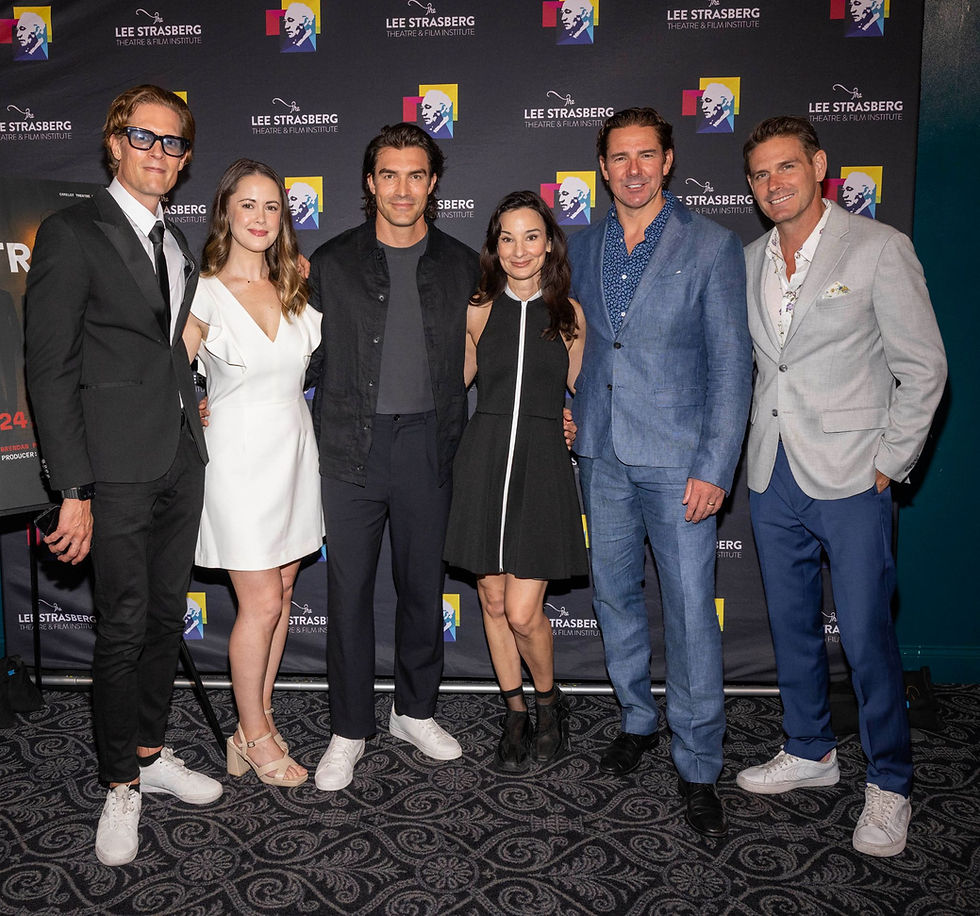Review: ‘Betrayal’ at Lee Strasberg Theatre & Film Institute
- Dondre Tuck

- Aug 26
- 3 min read
Updated: Sep 17
Playwright Harold Pinter’s 1978 “Betrayal” follows the unraveling of a love affair between Emma and Jerry, which Emma’s husband Robert later discovers. But it’s unusually structured in reverse chronological order, examining the layers of dishonesty between friends and lovers, and how memory and time can be distorted to serve one’s own purpose. Pinter uses this fractured structure to highlight not only the pain of betrayal, but also the human tendency to manipulate truth, whether out of love, survival or pride.

A recent multimedia production at the Lee Strasberg Theatre & Film Institute, directed by Brendan Pollecutt, made the reversely told story accessible and engaging. The acting was sharp and rooted in realism. The cast displayed active listening and commitment in every scene, allowing Pinter’s silences to carry as much weight as the dialogue itself.
At first, I didn’t fully feel the chemistry between Emma (Aynsley Bubbico) and Jerry (Peter Porte), but as the story moved backward, each character pulled the audience more deeply into their marital affair, making it increasingly convincing and layered.

Drew Rausch’s performance as Emma’s husband Robert was spectacular. His performance was sophisticated, led by restraint and quiet power. His ability to listen, sit in silence, and return to dialogue organically gave his character a palpable sense of pain and control. The most captivating moments were when he said nothing at all.
Pollecutt’s direction elevated the piece. Reverse chronology can easily become confusing, yet Pollecutt kept the audience grounded using a projector as both a backdrop and a timekeeper. Brendan tightened the pacing, making the play flow more dynamically than its traditionally slower rhythm. The blocking was clean and purposeful and the use of live music between scenes added a refreshing energy that kept the production engaging throughout.

Visually, the production struck a balance between period inspiration and modern minimalism. Production designer Geneva Klein and art director Andrea Maris leaned into a 1970s London aesthetic but stripped the stage down with sleek white furniture — chairs, bedsheets, and a couch — that seemed to symbolize purity, or maybe the illusion of it. Costumes were sharp and well-fitted, enhancing the characters’ presence without distracting from the text. Lighting was subtle but effective, shifting tone and atmosphere without overshadowing the intimacy of the story.
Taylor Blake’s sound design added another rich layer. Rather than leaning on a pre-made playlist, the live scoring gave the production texture and immediacy. It breathed life into the transitions and made the experience more immersive, reminding us that sound can be just as crucial to storytelling as dialogue.

Though infidelity is the primary theme, what resonated most for me was power and the weaponization of untold truths. Every character carried secrets, and in time each used their knowledge to tip the scales in their favor. One scene that stood out was Jerry and Robert’s exchange at a restaurant. Robert has known about the affair for years but never directly addresses it. Instead, he antagonizes Jerry, reclaiming psychological dominance while forcing Jerry to stew in uncertainty. It raised the deeper question: is the real betrayal the breaking of trust, or the loss of love?
The audience responded warmly, applauding after each scene and clearly enjoying the live music. This is a play that benefits from multiple viewings. Its reverse chronological structure almost demands you revisit it to catch what you might have missed. For me, it was both a fascinating introduction to a play told in reverse and an invitation to return and discover even more layers.
“Betrayal” performed in a limited engagement from Aug. 21 to 24 at the Lee Strasberg Theatre & Film Institute, 7936 Santa Monica Blvd., West Hollywood.



Comments